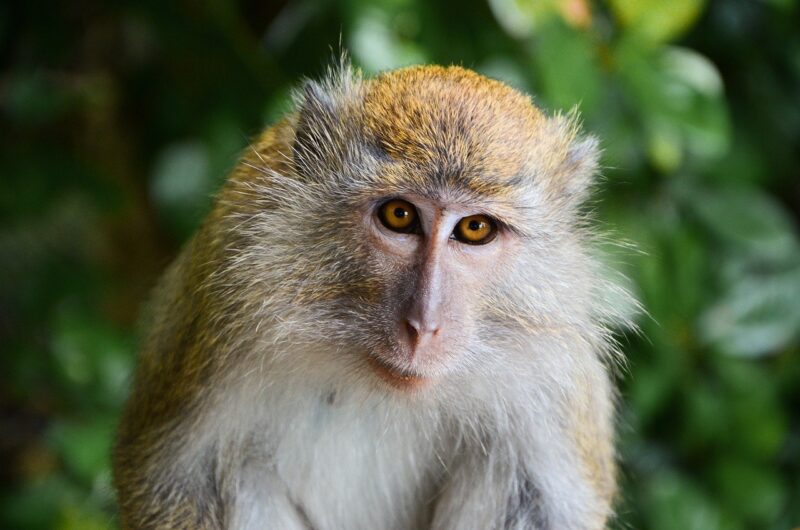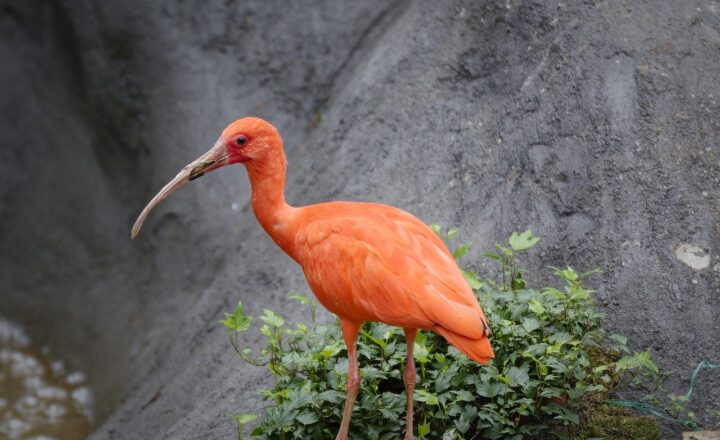How Monkeys Navigate the Forest Canopy: The Anatomy and Adaptations of Tree-Dwellers
November 14, 2024

Monkeys, one of the most fascinating creatures of the animal kingdom, are known for their intelligence, social behavior, and dexterous limbs. But beyond their playful antics and expressive faces, these primates wield a remarkable set of adaptations that enable them to thrive in the dense, three-dimensional world of the forest canopy.
In this extensive guide, we will delve into how monkeys navigate their tree-dwelling habitats, exploring their unique anatomy, limb adaptations, and the survival strategies they employ to maneuver through an environment that is both vibrant and perilous.
1. The Forest Canopy: A Distinct Ecosystem
The forest canopy is a sprawling network of treetops that serves as home to a myriad of species, including various monkeys, birds, insects, and other wildlife. It is characterized by rich biodiversity and complex ecological interactions.
Key Features of the Canopy Ecosystem:
– Vertical Habitat: The canopy offers a vertical habitat where numerous species coexist. Trees grow tall to reach sunlight, forming multiple layers of foliage.
– Food Resources: The canopy is abundant in fruits, leaves, and flowers, providing a varied diet for monkeys. They rely on these resources to satisfy their nutritional needs.
– Predation Risks: Living in the canopy comes with its dangers, including predators like birds of prey and snakes. Monkeys have adapted specific behaviors to evade these threats.
Understanding this unique ecosystem is crucial, as it directly influences the anatomy and behavior of the monkeys that inhabit it.
2. The Adapted Anatomy of Canopy-Dwelling Monkeys
The evolutionary design of monkeys is a testament to nature’s ingenuity. Different species of monkeys exhibit various anatomical adaptations that facilitate their lifestyle high above the ground.
Key Anatomical Features:
– Prehensile Tails: Some monkeys, like the spider monkey, possess long, prehensile tails that act as additional limbs. These tails are strong enough to grasp branches, providing the monkey with extra support when navigating the canopy.
– Opposable Thumbs: The opposable thumbs found on many monkey species allow them to grip and manipulate objects with precision. This is particularly advantageous for climbing and foraging.
– Flexible Limbs: Monkeys have strong, flexible limbs designed for swinging and climbing. Their long arms and strong fingers enable them to travel effortlessly from branch to branch.
– Enhanced Sensory Systems: Large eyes and well-developed vision help monkeys spot food and assess distances while navigating their arboreal habitat.
These adaptations collectively enable monkeys to exploit their environment successfully, reducing the risks associated with life in the treetops.
3. Navigation and Movement Techniques
Monkeys utilize a variety of techniques to navigate the forest canopy efficiently, ensuring they can access food and escape from predators. Understanding these methods sheds light on their incredible agility and dexterity.
Movement Techniques:
– Brachiation: This is a form of locomotion unique to some species of monkeys, where they swing from branch to branch using their arms. This method allows for rapid travel across the canopy.
– Climbing: Monkeys often climb using their hands and feet, employing a combination of upper and lower body strength to navigate vertical surfaces.
– Leaping: Agile species like the Capuchin monkey are known for their powerful leaps, which can bridge large gaps between branches, helping them traverse the canopy quickly.
– Suspension: Monkeys often hang from branches, utilizing their prehensile tails or strong limbs to maintain balance and look for food.
These methods not only showcase their physical prowess but also enhance their survival by allowing them to explore their environment thoroughly.
4. Social Structures and Communication in the Canopy
The social dynamics of monkeys significantly influence how they navigate their habitats. Increasingly complex social structures lead to cooperative behavior, enhancing survival in the canopy environment.
Social Behaviors:
– Group Living: Many monkey species live in troops, which provide safety in numbers. This social structure aids in predator detection and resource sharing.
– Communication: Vocalizations, body language, and even facial expressions are used to convey messages among group members, helping maintain social bonds and coordinate movements through the canopy.
– Territoriality: Some species are territorial and will defend their established areas from other groups, using vocal calls to announce their presence.
These social interactions play a crucial role in how monkeys traverse their environment, hunt for food, and avoid threats, showcasing an intricate balance between individual needs and group dynamics.
5. Challenges and Conservation Needs of Canopy-Dwelling Monkeys
Despite their unique adaptations and social structures, many monkey species are currently facing unprecedented challenges due to habitat destruction, climate change, and hunting pressures.
Conservation Concerns:
– Deforestation: The clearing of forests for agriculture, logging, and urban development poses a significant threat to monkey habitats, leading to population declines and fragmentation of groups.
– Climate Change: Altered weather patterns can disrupt food availability, affecting the nutritional health of canopy-dwelling monkeys.
– Illegal Wildlife Trade: Hunting and capturing monkeys for the illegal pet trade further endangers their populations.
Conservation Efforts:
To combat these issues, various organizations and governments are working to protect monkey habitats through:
– Protected Areas: Establishing reserves and parks to safeguard natural habitats and the species within.
– Restoration Projects: Reforestation and habitat restoration initiatives aim to reintroduce previously affected areas back to their natural state.
– Community Engagement: Involving local communities in conservation efforts ensures sustainable practices and enhanced awareness for the survival of these magnificent primates.
6. Conclusion
The amazing ability of monkeys to navigate the forest canopy is a remarkable combination of evolutionary adaptations, physical prowess, and intricate social structures. As they swing through the trees, they embody the beauty and complexity of life in the world’s forests.
However, with increasing challenges from human pressures, our responsibility to protect these species and their habitats has never been greater. By continuing to study, appreciate, and conserve the environments in which these remarkable primates thrive, we ensure that future generations can marvel at their agility and adaptability.
The journey of understanding how monkeys navigate their arboreal homes not only highlights their adaptations but also reminds us of the importance of preserving the ecosystems that support them.








